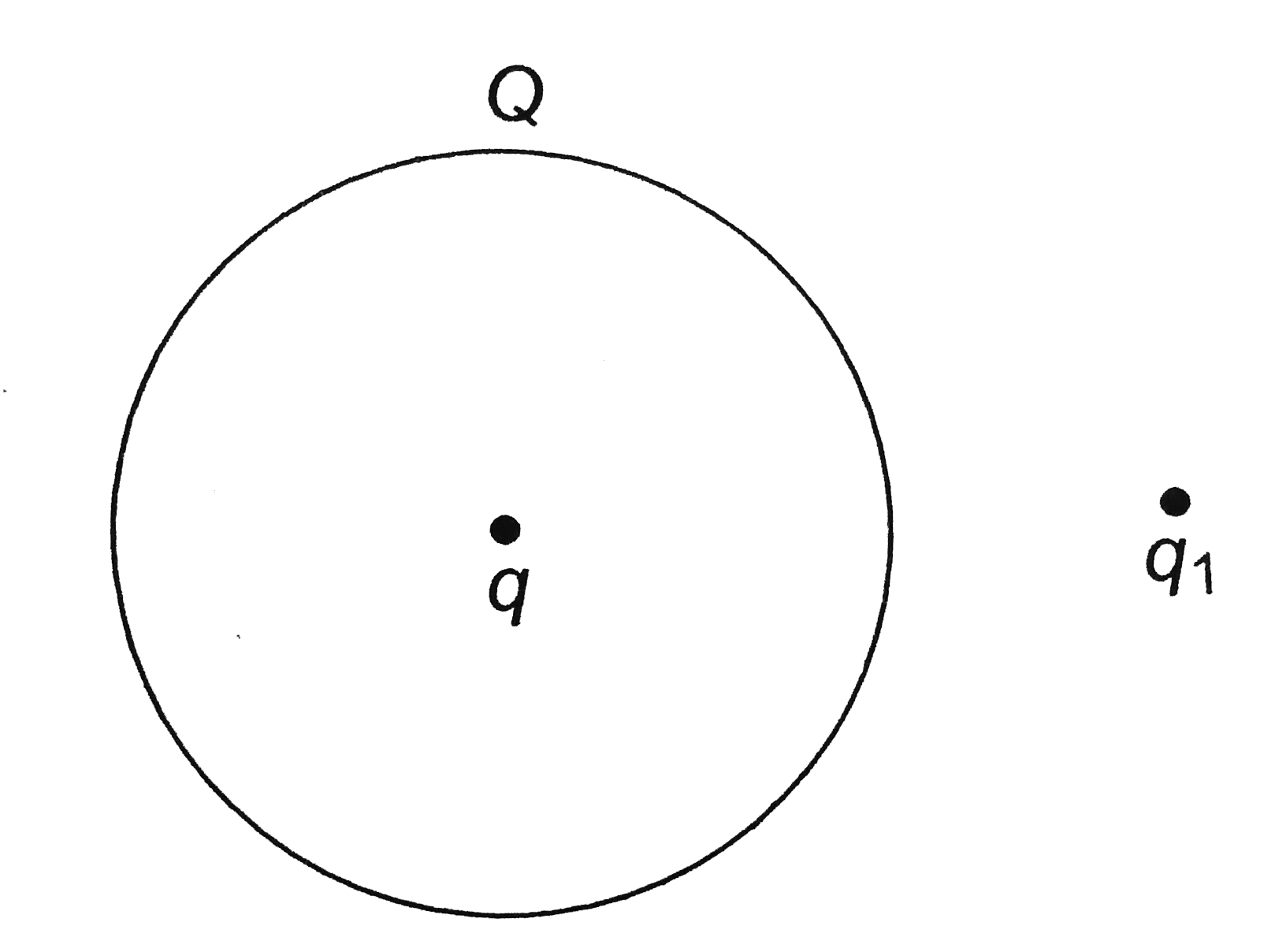Given are four arrangements of three fixed electric charges. In each arrangement, a point labelled is also identified- test charge, , is placed at point . All of the charges are of same magnitude , but they can be either positive or negative as indicated. The charges and point all lie on a straight line. The distances between adjacent items, either between two charges or between a charge and point , all are the same. Compare forces on +q in each case.

The correct Answer is:C
In (I) and (II), forces on due to all three charges are in same directions, but in case (II) distances are minimum.
Hence forces .
In case force on will be towards left and in , force will be toward right. But on calculation forces .
Topper's Solved these Questions
- ELECTRIC CHARGE, FIELD & FLUXBook:A2ZChapter:ELECTRIC CHARGE, FIELD & FLUXExercise:Electric Field Due To Point Charge
Explore 25 Videos
- ELECTRIC CHARGE, FIELD & FLUXBook:A2ZChapter:ELECTRIC CHARGE, FIELD & FLUXExercise:Electric Field And Motion
Explore 37 Videos
- DUAL NATURE OF RADIATION AND MATTERBook:A2ZChapter:DUAL NATURE OF RADIATION AND MATTERExercise:Section D - Chapter End Test
Explore 30 Videos
- ELECTRIC POTENTIAL & CAPACITANCEBook:A2ZChapter:ELECTRIC POTENTIAL & CAPACITANCEExercise:Section D - Chapter End Test
Explore 29 Videos
Similar Questions
Consider the points lying on a straight line joining two fixed opposite charges. Between the charges there is
View SolutionA positive charge q0 placed at a point P near a charged of metal sphere experience a force of repulsion of magnaitude F, the electric field E of the charge metal, charge at P is
View Solution
Knowledge Check
Given are four arrangements of three fixed electric charges. In each arrangement, a point labelled P is also identified - test charge, +q, is placed at point P. All of the charges are of the same magnitude Q, but they can be either positive or negative as indicated. The charges and point P all lie on a straight line. The distances between adjacent items, either between two charges or between a charge and point P, are all the same.

Correct order of choices in a decreasing order of magnitude of force on P isAII>I>III>IVBI>II>III>IVCII>I>IV>IIIDIII>IV>I>IIThe product of the magnitude of the charge and the distance between the centres of positive and negative charge is called
Acharge ratioBdipole momentCcurrent flowDmagnetic momentThe product of positive charge and distance between the two charges is
Aelectric dipoleBelectric dipole momentCelectric fluxDelectric intensity
A positive charge q0 placed at a point P near a charged of metal sphere experience a force of repulsion of magnitude F, the electric field E of the charge metal, charge at P is
View SolutionTwo equal negative charges are fixed at points and on y-axis. A positive charge Q is released from rest at the point on the x-axis. The charge Q will:
View SolutionTwo positive point charges of unequal magnitude are placed at a certain distance apart. A small positive test charge is placed at null point, then
View SolutionTwo point charges +4q and +q are placed at a distance L apart. A third charge Q is so placed that all the three charges are in equilibrium. Then location. And magnitude of the third charge will be
View SolutionA thin metallic spherical shell contains a charge Q on it. A point charge q is placed at the center of the shell and another charge q1 is placed outside it as shown in figure. All the three charges are positive

The force on the charge at the centre is
View Solution